
How to Use Battery Charging Module 1 x 16340 USB 5V: Examples, Pinouts, and Specs
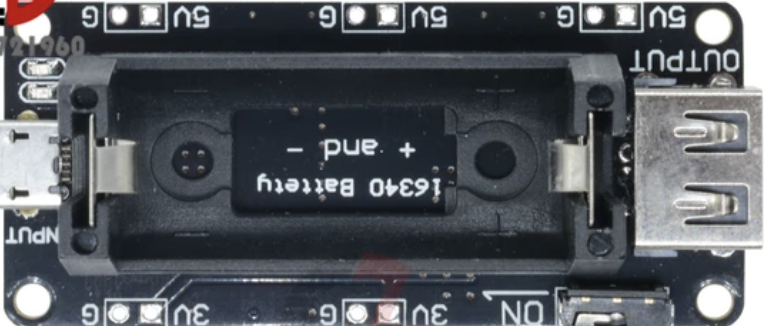
 Design with Battery Charging Module 1 x 16340 USB 5V in Cirkit Designer
Design with Battery Charging Module 1 x 16340 USB 5V in Cirkit DesignerIntroduction
The Battery Charging Module 1 x 16340 USB 5V (Manufacturer Part ID: 1567) is a compact and efficient charging solution designed specifically for 16340 lithium-ion batteries. Manufactured in China, this module allows users to charge a single 16340 battery using a standard 5V USB power source. It features built-in safety mechanisms, including overcharge, overcurrent, and short-circuit protection, ensuring reliable and safe operation.
Explore Projects Built with Battery Charging Module 1 x 16340 USB 5V
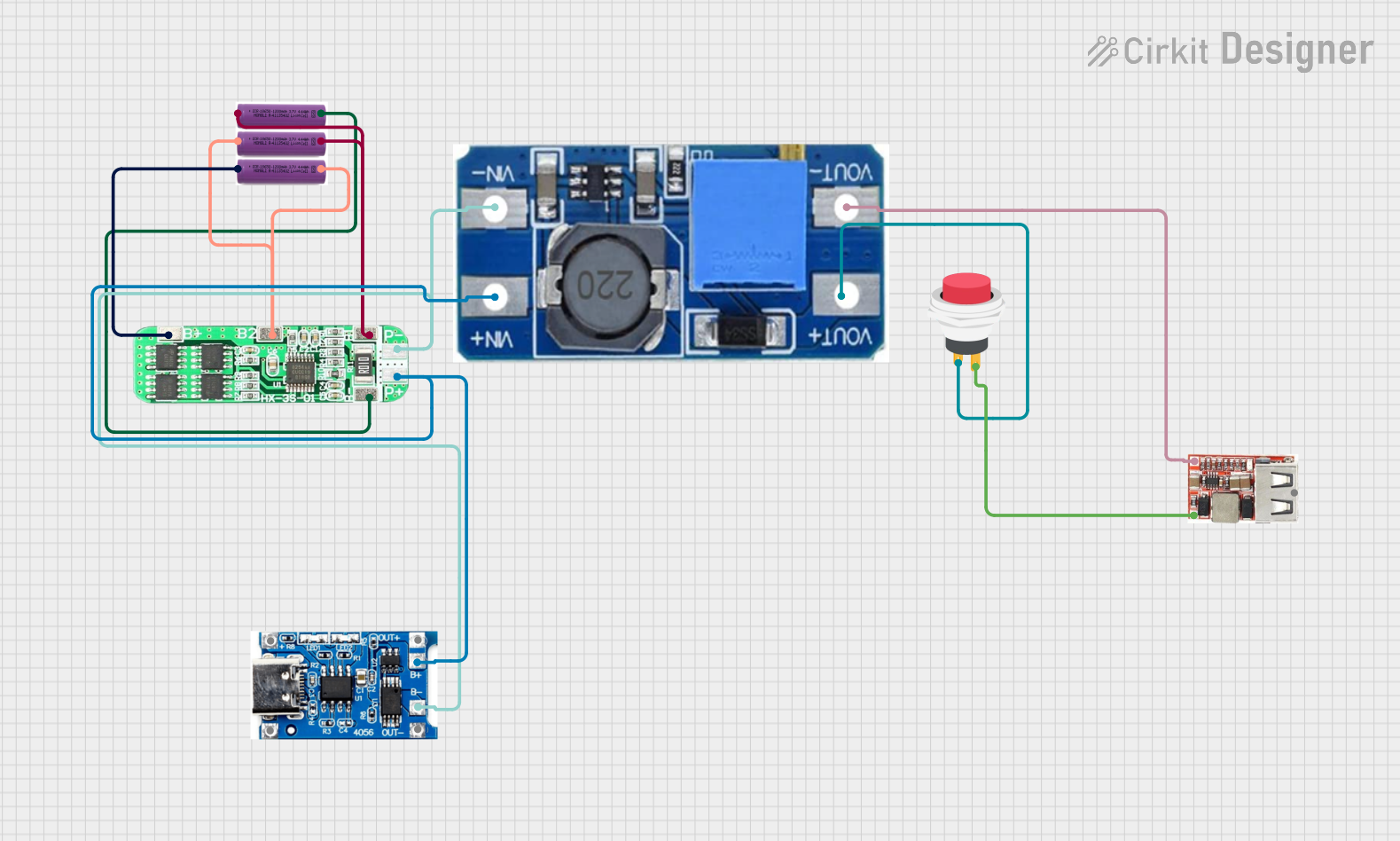
 Open Project in Cirkit Designer
Open Project in Cirkit Designer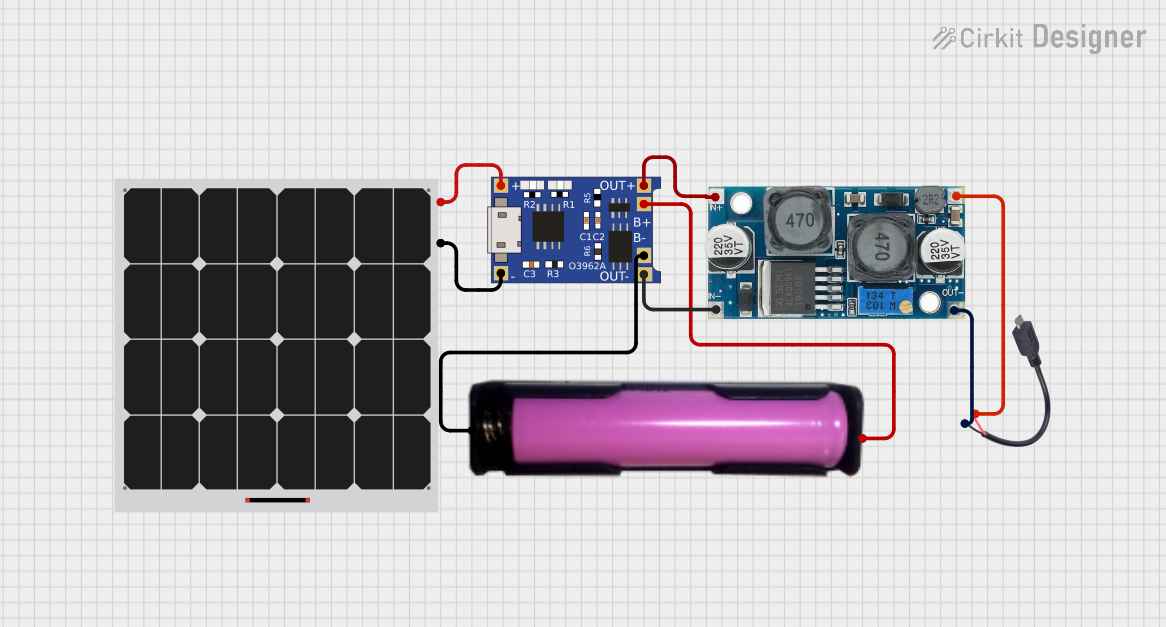
 Open Project in Cirkit Designer
Open Project in Cirkit Designer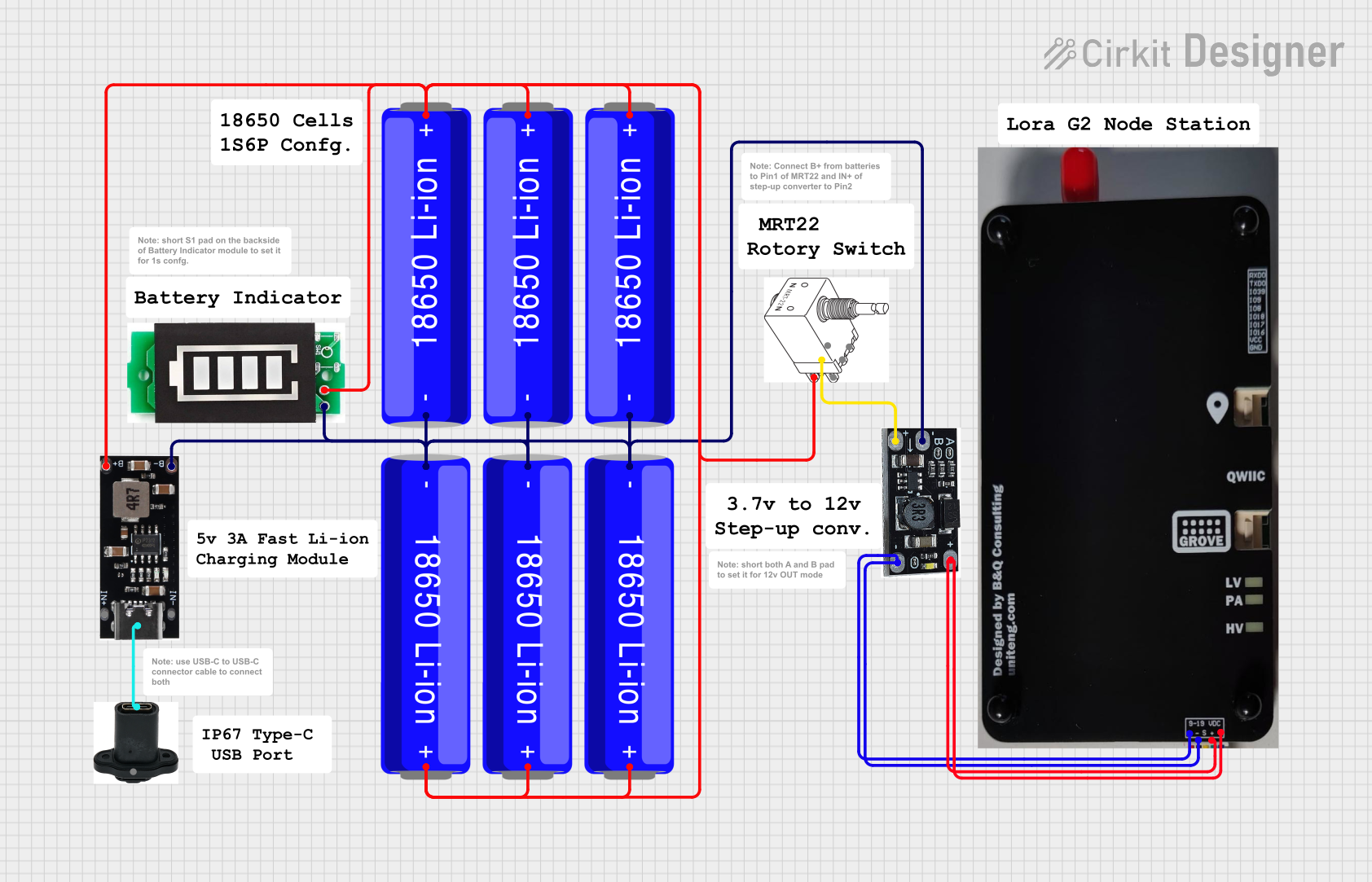
 Open Project in Cirkit Designer
Open Project in Cirkit Designer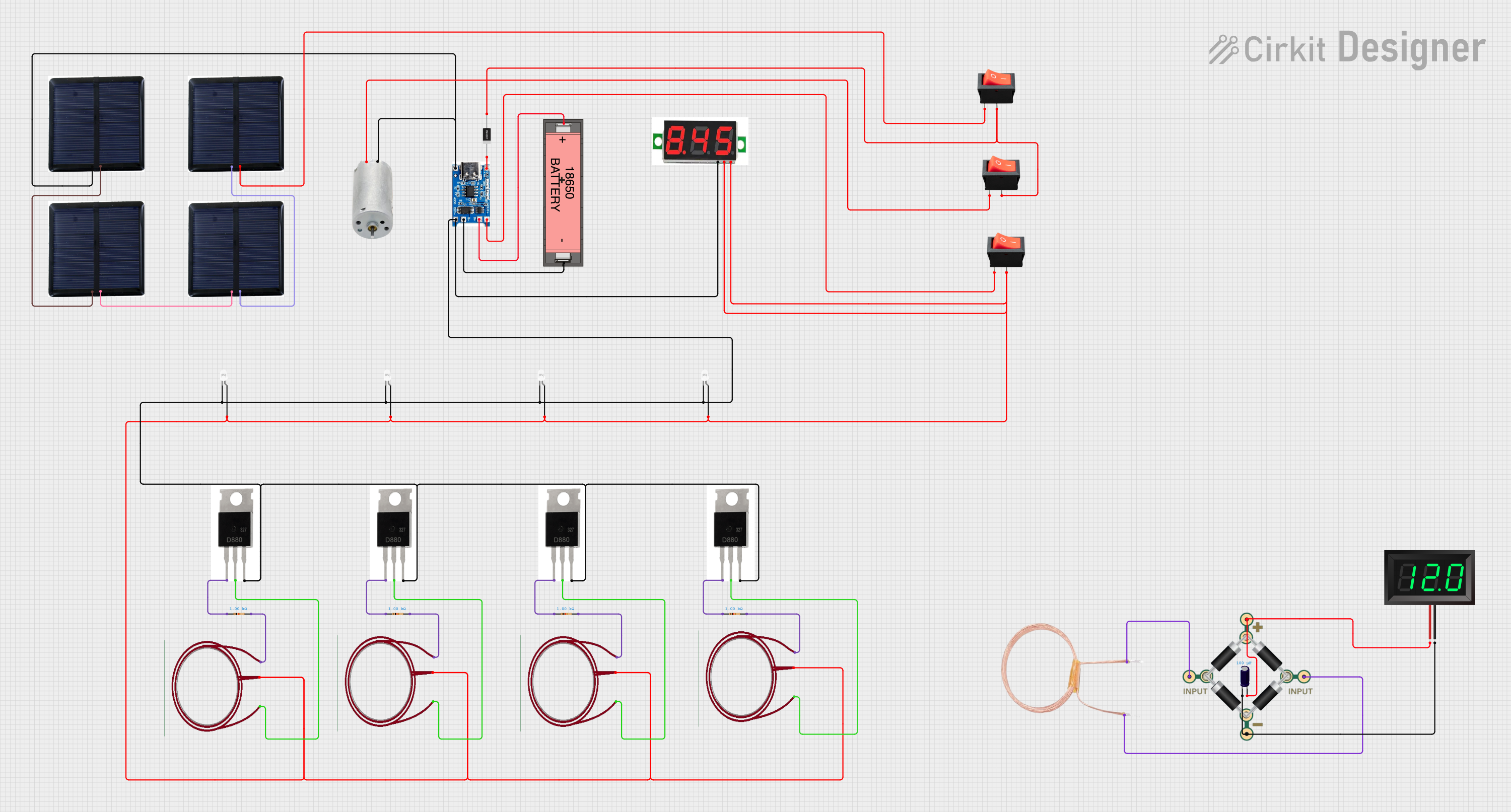
 Open Project in Cirkit Designer
Open Project in Cirkit DesignerExplore Projects Built with Battery Charging Module 1 x 16340 USB 5V

 Open Project in Cirkit Designer
Open Project in Cirkit Designer
 Open Project in Cirkit Designer
Open Project in Cirkit Designer
 Open Project in Cirkit Designer
Open Project in Cirkit Designer
 Open Project in Cirkit Designer
Open Project in Cirkit DesignerCommon Applications and Use Cases
- Charging 16340 lithium-ion batteries for flashlights, laser pointers, and small electronic devices.
- Portable power solutions for DIY electronics projects.
- Integration into battery-powered systems requiring a compact charging module.
Technical Specifications
Below are the key technical details and pin configuration for the module:
Key Technical Details
| Parameter | Value |
|---|---|
| Input Voltage | 5V DC (via USB) |
| Charging Voltage | 4.2V DC |
| Charging Current | 500mA (typical) |
| Battery Compatibility | 16340 lithium-ion battery |
| Protection Features | Overcharge, overcurrent, short-circuit |
| Dimensions | 25mm x 15mm x 5mm |
| Operating Temperature Range | -10°C to 50°C |
Pin Configuration and Descriptions
| Pin Name | Description |
|---|---|
| USB Input | Standard USB port for 5V DC input. |
| BAT+ | Positive terminal for the 16340 battery. |
| BAT- | Negative terminal for the 16340 battery. |
| LED Indicators | Status LEDs for charging and full charge. |
LED Indicator Behavior
| LED Color | Status Description |
|---|---|
| Red | Battery is charging. |
| Green | Battery is fully charged. |
Usage Instructions
How to Use the Component in a Circuit
- Connect the Battery:
- Attach the positive terminal of the 16340 battery to the
BAT+pin. - Attach the negative terminal of the battery to the
BAT-pin.
- Attach the positive terminal of the 16340 battery to the
- Power the Module:
- Plug the module into a USB power source (e.g., a USB wall adapter or a computer USB port).
- Monitor Charging:
- Observe the LED indicators to track the charging status:
- Red LED: Charging in progress.
- Green LED: Charging complete.
- Observe the LED indicators to track the charging status:
- Disconnect Safely:
- Once the green LED lights up, unplug the USB power source and remove the battery.
Important Considerations and Best Practices
- Battery Compatibility: Ensure only 16340 lithium-ion batteries are used with this module. Using incompatible batteries may result in damage or unsafe operation.
- Power Source: Use a reliable 5V USB power source with sufficient current capacity (at least 500mA).
- Ventilation: Operate the module in a well-ventilated area to prevent overheating.
- Polarity Check: Double-check the battery polarity before connecting to avoid damage to the module or battery.
- Avoid Overloading: Do not connect multiple batteries or other components to the module.
Arduino UNO Integration
While this module is not directly designed for Arduino integration, it can be used in projects where a 16340 battery is required as a power source. Below is an example of how to monitor the battery voltage using an Arduino UNO:
// Example code to monitor 16340 battery voltage using Arduino UNO
// Connect the BAT+ terminal to an analog pin (e.g., A0) via a voltage divider
const int batteryPin = A0; // Analog pin connected to BAT+ via voltage divider
float voltageDividerRatio = 2.0; // Adjust based on your resistor values
void setup() {
Serial.begin(9600); // Initialize serial communication
}
void loop() {
int rawValue = analogRead(batteryPin); // Read the analog value
float batteryVoltage = (rawValue / 1023.0) * 5.0 * voltageDividerRatio;
// Print the battery voltage to the Serial Monitor
Serial.print("Battery Voltage: ");
Serial.print(batteryVoltage);
Serial.println(" V");
delay(1000); // Wait for 1 second before the next reading
}
Note: Use a voltage divider circuit to ensure the battery voltage does not exceed the Arduino's input voltage range (0-5V).
Troubleshooting and FAQs
Common Issues and Solutions
| Issue | Possible Cause | Solution |
|---|---|---|
| Red LED does not light up | USB power source not connected or faulty | Check the USB connection and power source. |
| Green LED does not light up | Battery not fully charged or faulty | Allow more time for charging or check the battery. |
| Module overheating | Insufficient ventilation or faulty battery | Ensure proper ventilation and verify battery health. |
| No LED activity | Incorrect battery polarity or damaged module | Verify battery polarity and inspect the module for damage. |
FAQs
Can I use this module to charge other battery types?
No, this module is specifically designed for 16340 lithium-ion batteries. Using other battery types may result in damage or unsafe operation.What happens if I leave the battery connected after it is fully charged?
The module includes overcharge protection, so the battery will not be overcharged. However, it is recommended to disconnect the battery once fully charged to prolong its lifespan.Can I use this module with a power bank?
Yes, the module can be powered by a 5V USB power bank, making it a portable charging solution.What is the maximum charging current?
The module provides a typical charging current of 500mA, which is suitable for 16340 batteries.
By following this documentation, users can safely and effectively utilize the Battery Charging Module 1 x 16340 USB 5V for their projects and applications.